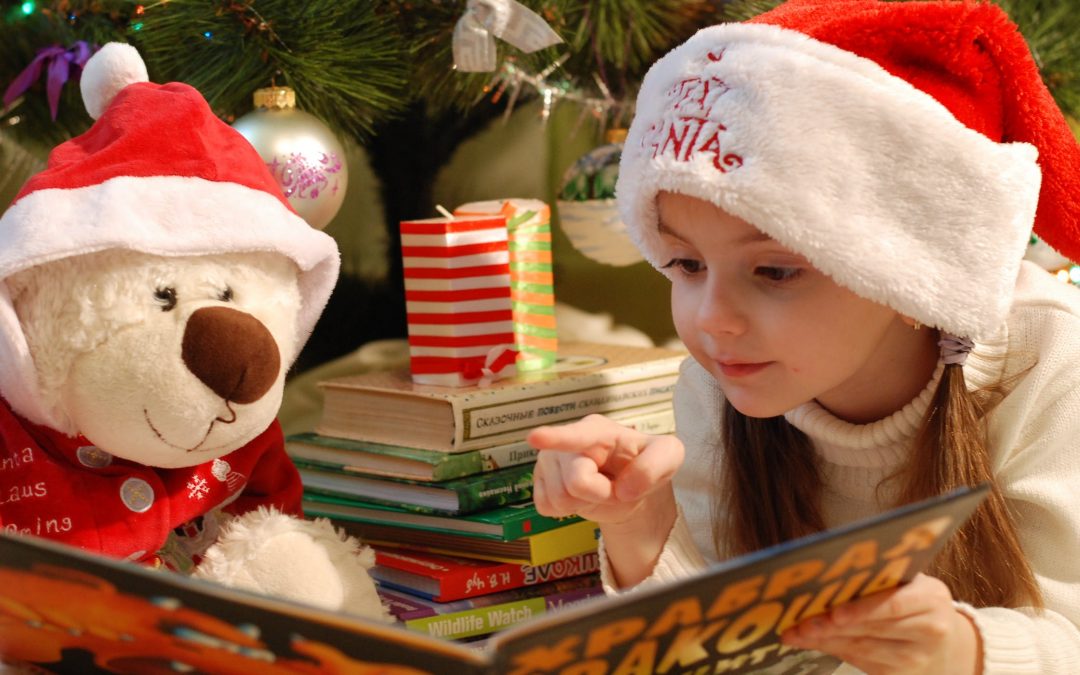Giving gifts that are desirable, while remaining environmentally conscious, can be tricky. There are legitimate environmental concerns when it comes to gift giving, like toxic chemicals and materials, non-recyclable packaging, and objects made with short lifespans. Between birthdays and holidays, the amount of gifts children receive can become overwhelming. This can can be used an important learning opportunity around reducing consumption and waste, how to value the stuff we really need, and the privileges many of us have to give and receive gifts (when many people do not have the same luxury). It can be hard to find a balance with the power of advertising and peer influence, but it’s not impossible.
Starting early is a good idea. If we focus holiday celebrations on people and fun (not on presents) right from the beginning, that’s what children will learn. When adults model the behaviour, it becomes reinforced. We can help them to develop appropriate expectations by having events where participants play games, sing songs, tell stories, make crafts, share special food and have fun together – this way it is not all about the gifts.
As you’re entering the holiday season and thinking of gifts for the little ones in your life, ask yourself: What does this child really need? What is the “shelf-life” of the gift? If the gift meaningful? How does this gift impact the environment? We’ve put together a list of tips to help you navigate these questions!
Sustainable Gift Giving for Children
- Experiential Gifts: Forget material goods altogether! Instead, Consider tickets to a concert, gift certificate for the movies, passes to a family attraction, lessons to try something new, art class, etc.
- Handmade Gifts: Make your own gifts (example: homemade playdough with secondhand cookie cutters) or look for treasures at local craft sales (i.e. mittens, hand-made dolls, puppets, blocks, wooden toys, puzzles, etc.).
- Secondhand Gifts: Previously loved items are available at thrift shops at far less cost than buying new. We suggest being aware of safety (small or loose parts), cleaning items well, and watching for any banned items (e.g. jewellery containing lead) that may have found their way back into the market. Check out Once-Upon a Child for a great selection.
- The Essentials: Although they aren’t flashy, essentials like personal hygiene products and food are easy, useful and less wasteful (when handemade or bought responsibly). For some inspiration, check out these DIY bath bombs, soap, and shampoo. Spice them up with some personalized packaging (here is some inspiration, but stick to the environmentally friendly options). We recommend using natural ingredients and avoiding plastics when making, packaging, and wrapping your items.
- Fair Trade: Chocolate and other gift items are available from shops that offer certified fair trade goods. It’s the right thing to do, and can be a learning opportunity!
- Buy Organic: Whether it’s a food item, ingredient, or clothing, be sure it’s made from organic materials!
- DIY: A gift that children get to make themselves or an independent activity, like a gardening book with a package of seeds or a homemade children’s cookbook with a DIY apron.
- Avoid Plastics: Phthalates, BPA, PVC are all harmful chemicals that are found in soft plastics. Plus, plastics are polluting our planet and never really go away. You can avoid plastics altogether and opt for toys made with other materials like wood with water-based paints (example: Plan Toys). Always check the labels or buy natural rubber. Even better, buy useful items that can replace single-use plastics, like these really cool straws or reusable sandwich bags.
- Recycled Materials: when buying something new, try to look for products/ items made from recycled materials (i.e. notebooks from recycled paper).
- Gift of Charity: This may be a harder one to sell, but there are ways it can be made as a fun family experience! Pick a local charity and collect items to drop off as a donation a family (i.e. clothing for a shelter, food for a hamper, food and supplies for a pet shelter, etc.)
- Social Spending: Purchasing items from places like UNICEF, Ten Thousand Villages and other charitable organizations allows you to support causes with your consumer dollars.
- Adopt a Wild Animal: What a great way for children to learn about other species, habitat preservation, and human impacts! Options include polar bears, penguins and butterflies.
- Active & Outdoors: Consider a gift to keep kids active and playing outdoors, like snow sports equipment, a bike or cycling gear, and winter wear like tuques and mitts. Lessen your impact on the environment and your bank account by looking for these items secondhand, like a re-purposed bike from The W.R.E.N.C.H. Perhaps this will help encourage them to walk or bike to school!
- Books: There are so many outstanding books for children. Look for Canadian authors, books that fit the child’s interests, and classics with environmental messaging, like The Lorax by Dr. Seuss.
- Toys Without Batteries: While the latest electronics get a lot of advertising exposure, there are many great toys and games that don’t need batteries — board games, cards, balls, magic tricks, stuffed animals, skipping ropes, frisbees, etc. If you end up with something that does take batteries, we suggest using the rechargeable kind, recharging them as needed, and making sure they are safely disposed of when they stop holding a charge.
What sustainable gifts are you giving this holiday season?




My friend swears by Jello play-dough! She says it’s got a better texture than the traditional kind 🙂 https://modernparentsmessykids.com/play-dough/